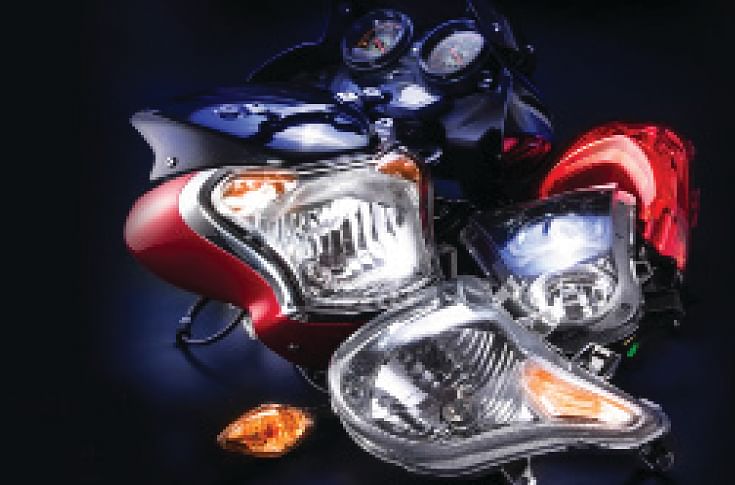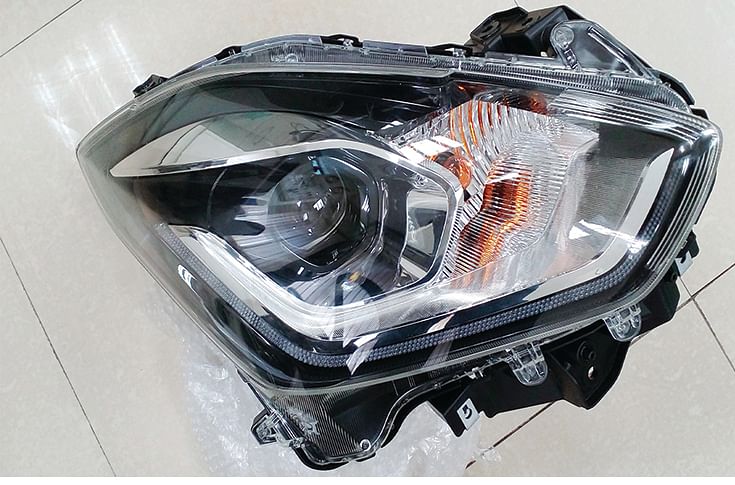Deepak Jain: ‘Focus on building competencies and localising.’
Lumax Group Chairman Deepak Jain calls for India Auto Inc to be future-ready with an EV-agnostic roadmap and stresses on the need for a holistic approach.
The growth road for the Indian two-wheeler industry has been a rather serpentine one since the 2018 peaks. OEMs and dealers experienced the sharpest phase of demand contraction in FY2021. Production fell by nearly 13 percent and sales plunged as much in the last fiscal. Exports too nosedived 7 percent. But what exactly put the brakes in the steady growth path?
Covid-19 is not the only trigger that brought about this massive slowdown. According to Deepak Jain, Chairman and MD, Lumax Industries, “Starting 2018, fundamentally there have been too many external triggers in this industry.” He was speaking at the inaugural panel discussion of Autocar Professional’s mega Two-Wheeler Week on the industry regaining momentum.
The other panelists included Yadvinder Singh Guleria, Director —Sales & Marketing, Honda Motorcycle & Scooter India, Vinkesh Gulati, President, Federation of Automobile Dealers Associations (FADA) and Srinivas Kantheti, co-founder & MD, Bike Bazaar.
Jain explained how prices of two-wheelers were affected due to introduction of new emission regulations and “impacted the relative affordability and we have seen a steady decline. It has been exacerbated further due to the lockdown on account of Covid-19. The supply chain and the demand suffered.”

“If we look at last year, perhaps more vehicles could have been sold if the supply chain was able to cater to customer demand,” he added. In fact, the auto component industry, whch accounts for nearly 2.3 percent of the national GDP and 25 percent of the national manufacturing GDP, saw double-digit decline in its FY2020 turnover and saw flat growth in FY2021.
Jain believes that the “challenge is that we are in a blind spot as a result of all that’s happening in global markets. Raw material commodity prices have increased, there is semiconductor shortage, logistics costs have risen and then Covid-19. All these factors have put pressure on the global supply chain.”
Localisation push
Jain’s strategy is to “focus on building competencies and localising.” According to him, “there is heightened need for localisation across the supply chain due to the massive shift in technologies and that will create opportunities. Stable sustainable volumes will improve RoI from the investment made for the transition to EVs from ICE. Ensuring business continuity is critical.”
He reiterated the need for greater calibration of the demand-supply dynamics, especially at a time when the EVs have introduced new dynamics in the two-wheeler market. The supply chains are an integral part of the manufacturing cycle and the concerns are not limited to the immediate future.

Earlier this year, speaking at the 61st ACMA Annual Session, Jain had highlighted that, “there is definitely competence which is building within the framework of the Indian supply chain partners to actually invest in these. Now, the conundrum is that there is low scale, and hence investment is an issue and this is where the start-ups and the risk takers may lay more bets. There has to be a collaborative model to incentivise the industry.”
He had outlined, in September, that ACMA has a structured a way to engage with new-age mobility players — be they EV players, those dealing in telematics and data management, or even the start-ups — and is looking at inclusiveness “because the component supply chain will be now restructured and redefined given the incoming advanced technologies.” The greater sense of collaboration is what formed the essence of effective work strategy through the Covid-ravaged months. He put the focus on how “Tier 2s and 3s have always been more fragile. Scale is crucial in the two-wheeler industry. I expect consolidation in the industry. High level of integration between Tier 1s and Tier 2-3s helped in the continued growth of the component segment as a whole.” He prioritised ensuring the financial health of Tier 1s, 2s and 3s and considers the immediate target to be getting back to 2018 levels.
EVolving demographics
But any discussion about the future of the auto industry is incomplete without touching on the key topic of transitioning to electric vehicles. Electrification of two-wheelers is underway in India today. In fact, most in the industry would agree that being future- ready today is a lot about how it plans to implement the transition to EVs. And the customer migration to the new form of eco-friendly mobility is already underway globally.
Jain points out that the “the supply chain needs to clearly ensure whether a supplier is making EV-agnostic parts. The competitiveness of the vehicle manufacturer will represent how localised the supply chain is. OEMs and supply chain need to work hand-in-hand.”
India is the world’s largest localised two-wheeler market and Jain said that “OEMs and supply chains need to work together to build the nascent EV market. Government can only be a catalyst. Volume is what will make a difference and you need a self-sustaining market with adequate supply chain push.”

The nature of investment in EVs and the scope of localisation therein is important. To Jain, it is “both a challenge and opportunity for the two-wheeler industry. We can’t do everything and one needs to be selective and plan investment accordingly.” He cited examples of the Honda partnerships and Bajaj collaboration in the past decades to bring about a certain edge and quality consciousness in the overall market. In fact, in sync with this concept, Jain’s own company — the Lumax Group — is actively working on partnerships to strengthen the supply chain. The Group with 15 entities, 33 manufacturing units and Rs 2,700 crore annual turnover is spread in seven states with 4 R&D centres and one overseas design centre in Taiwan. It has eight joint ventures with a variety of companies across countries spanning from Japan to Germany. In fact, it has earmarked close to Rs 150 crore worth capex in recent times to build electric competencies.
But any talk about the future is incomplete without an appropriate estimate of the growth potential. Jain is cautiously optimistic. While the Diwali sales have not been particularly euphoric, it is hard to deny the green shoots. At the 61st ACMA session in September 2021, Jain had pointed out how “the component industry is multi-dimensional. There is the domestic industry, export opportunity, and also the aftermarket and all three are concurrently changing.”
As he reiterated earlier, a stable growth curve is what the industry is hoping for given the challenges. “When FY2022 started, the forecasts were close to double- digit but I expect sales to be stable single-digit by the time FY2022 ends, close to sub-20 million vehicles,” he signed out on a cautiously optimistic note.
This was first published in Autocar Professional's November 15 issue.
RELATED ARTICLES
Complete List of Cars and SUVs Tested by Bharat NCAP
Bharat NCAP has crash-tested 20 models to date, including both ICE-powered vehicles and EVs.
Belrise Industries: A Story of Grit and Focus
The Belrise Industries IPO is the culmination of a multi-decade journey by entrepreneur Shrikant Badve that started in a...
Mahindra and Lightweighting: Solid Steel To Nimble Aluminum
Stricter emission regulations and rising fuel efficiency targets are driving a fundamental transformation in powertrain ...





 17 Nov 2021
17 Nov 2021
 9485 Views
9485 Views





 Autocar India
Autocar India


 Shahkar Abidi
Shahkar Abidi


